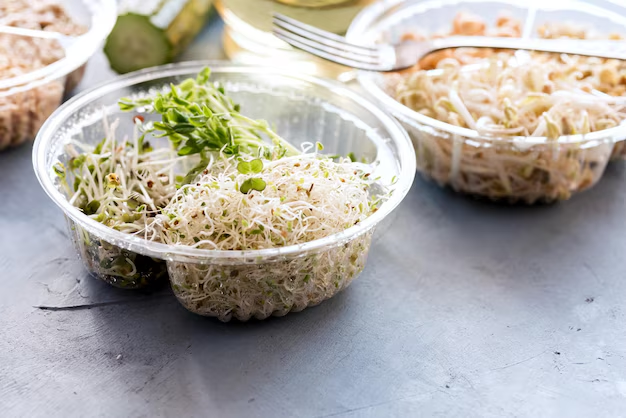How Long Can You Keep Leftover Rice Safely in the Fridge?
Rice is a staple food enjoyed by millions of people around the world. Whether part of a simple dinner or an elaborate feast, rice often leaves us with leftovers stored in the refrigerator. However, many people wonder how long they can safely keep that leftover rice before it goes bad. In this comprehensive guide, we will explore the shelf life of leftover rice in the refrigerator and provide practical tips for maximizing freshness and safety. Let’s dig in!
🌾 Understanding Rice Freshness & Safety
To keep your meals safe and delicious, it’s crucial to understand rice's shelf life and how it can be affected by various factors.
Why Rice Can Be Perishable
Rice is perishable due to its moisture content and nutrient-rich composition, which can provide a breeding ground for bacteria if not stored properly. One specific bacterium called Bacillus cereus can thrive in certain conditions, leading to foodborne illnesses.
How Temperature Affects Rice Storage
Refrigerators are designed to slow bacterial growth and preserve food freshness. However, the cooling temperature range, typically around 35 to 38 degrees Fahrenheit (1.5 to 3.3 degrees Celsius), is still not low enough to completely stop bacterial growth in cooked rice. This means cooked rice can spoil if left for too long, even in the fridge.
🌡️ How Long Does Leftover Rice Last in the Refrigerator?
Cooked rice can generally be safely stored in the refrigerator for 3 to 5 days. This storage window ensures freshness and minimizes the risk of bacterial growth. However, this guideline assumes that the rice was cooled and refrigerated promptly.
Best Practices for Storing Cooked Rice
Here are some effective tips for storing cooked rice to extend its shelf life:
- Cool Promptly: Allow the rice to cool for no longer than 1 hour before refrigerating.
- Store Properly: Transfer the rice to an airtight container to prevent moisture loss and contamination.
- Refrigerate Quickly: Ensure the refrigerator is set to an appropriate temperature and the rice is stored within two hours of cooking.
🥡 Recognizing Spoiled Rice
Spoiled rice can pose health risks, so recognizing the signs of spoilage is key to food safety.
Signs That Rice Has Gone Bad
- Off Odor: Spoiled rice often emits a sour or unpleasant smell.
- Slimy Texture: The presence of slime or an overly sticky texture is a clear indicator of spoilage.
- Discoloration: If the rice has turned an unusual color, it is likely no longer safe to eat.
If any of these signs are present, it’s best to discard the rice rather than risk health issues.
🕑 The Impact of Rice Types on Shelf Life
Different types of rice may have slightly different storage needs and spoilage rates.
White Rice vs. Brown Rice
- White Rice: Generally keeps better due to its lower oil content.
- Brown Rice: Contains natural oils in its bran layer, which can lead to a shorter shelf life compared to white rice.
Specialty Rices
Other types of rice like jasmine, basmati, or wild rice generally follow the same storage guidelines as white rice, but monitoring for spoilage signs is always advisable.
🥣 Safe Reheating Practices
Reheating rice is a common practice, but it must be done carefully to ensure food safety.
How to Reheat Rice Safely
- Use the Right Method: Options include microwaving, steaming, or using a skillet. Ensure the rice reaches a temperature of at least 165 degrees Fahrenheit (74 degrees Celsius).
- Add Moisture: Adding a small amount of water before reheating can help maintain texture and prevent drying out.
- Avoid Reheating More Than Once: To minimize the risk of bacterial growth, only reheat the portion you plan to eat and avoid thawing and refreezing.
📝 Summary: Key Takeaways for Storing and Using Leftover Rice
- ⏰ Duration: Store leftover rice in the fridge for 3 to 5 days.
- 🧊 Cooling: Cool rice promptly and refrigerate within 1-2 hours.
- 🛡️ Storage: Use airtight containers to prevent contamination.
- 👃 Check for Spoilage: Smell, texture, and color are primary indicators.
- 🔄 Reheating: Heat thoroughly and ensure even warming.
🏠 Useful Tips for Reducing Rice Waste
Minimizing food waste is not only good for the planet but also for your wallet.
Portion Control
- Right Amount Matters: Cook only as much rice as needed to avoid large amounts of leftovers.
Creative Uses for Leftover Rice
Get creative with your leftover rice instead of letting it spoil:
- Fried Rice: A quick and tasty option to use up leftover rice with veggies and proteins.
- Rice Salad: Mix cold rice with fresh vegetables and a light dressing for a refreshing meal.
- Rice Pudding: Transform extra rice into a sweet dessert with milk, sugar, and vanilla.
By following these guidelines and handy tips, you can enjoy your rice dishes while ensuring food safety and reducing waste. Whether you choose to store and reheat confidently or innovate with creative meals, leftover rice can be a delicious staple in your kitchen repertoire.
